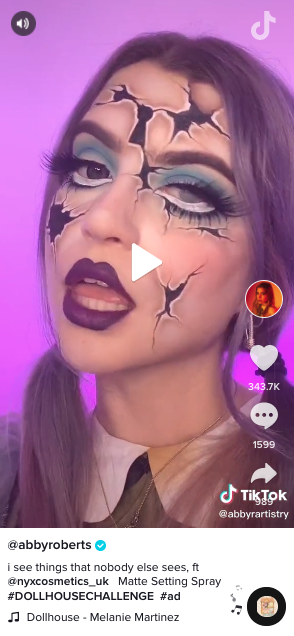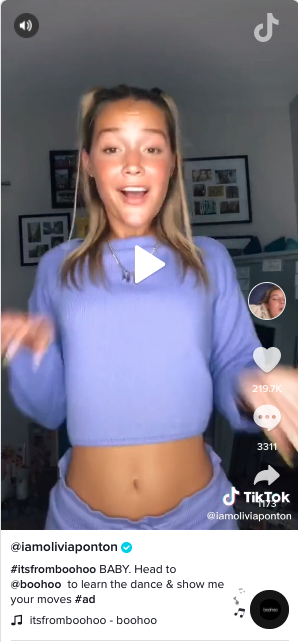3 Ways to Adapt Your Marketing Strategy if Google Search Disappears From Australia
The news that Google search could be withdrawn from Australia will affect retailers, marketers and consumers. But we’ve got three ways you can adapt your marketing strategy to minimise disruption to your ecommerce sales figures.
Written By
Swanky

Google is currently locked in a heated debate with the Australian government over a proposed new media bill that, if passed, would require them to pay local news outlets and publishers for featuring their content in search results. Google’s disagreement with this bill is that it gives Australian publishers an unfair advantage in the market. As a result, they’ve threatened to withdraw their search product from the country; a move which has huge implications for retailers.
If passed, this new legislation would also affect Facebook. In fact, at the time of writing, Facebook has removed posts from Australian publishers on the platform1. Microsoft on the other hand are reported to be welcoming the news, and are ‘pretty confident’2 that if Google does pull their search engine out of the country, they can fill the void. It wouldn’t be a stretch to imagine that they’re excited to get their hands on the 94.5% share of the search market that Google occupies in Australia right now! For now though, that’s a worst-case scenario move by Google.
They may choose to withdraw the Google News product, a move that has already happened3 in Spain for reasons similar to the issues now faced in the Australian market. But this situation could also mean that Google has to submit its news search algorithms to a government agency4 for approval. As you might imagine, that would cause a number of issues around personalised search results and freedom of the press. Google has also said this would ‘break how the Internet works’5.
There’s no doubt that if the disagreement isn’t resolved and Google pulls its news and/or search products from Australia, it would present a challenge for retailers and their marketing. Customer acquisition strategies almost always involve Google search ads because they are so effective at capturing buyers with intent to purchase.
But it doesn’t mean it’s game over for growing a business.
Alternative marketing strategies
There are several ways that retailers can adapt their acquisition marketing strategy, whether or not Google decides to withdraw from the Australian market. And we have three routes to consider:
- Use a different selection of ad platforms
- Create (more) video content
- Refocus on customer retention
#1 Use different ad platforms
Even if Google Search ads are no longer part of the acquisition toolbox, Microsoft Advertising (formerly Bing ads) will be an increasingly viable option, especially as it will probably take the majority of the search market share left behind by Google.

The ad interface works in a very similar way to Google Ads, and you can import your current set-up from Google, so there’s time saving to be had there. Top tip – don’t forget to adjust your source attribution if it’s not done dynamically – you could find that when you come to review the success of the platform, you’re missing the data to do this accurately.
And as a bonus – Yahoo is part of the Microsoft network, so you can access this audience through the platform as well. We know what you’re thinking, it’s not 1993, but Yahoo is still the 12th most visited site on the Internet and in the US it ranks #4!
But search ads aren’t just the remit of the main search engine players like Google and Bing – don’t forget there are plenty of other platforms out there to choose from. Amazon is an obvious one that springs to mind. Amazon offers a range of different ad types that could replace some of your search acquisition strategy. The user intent on the platform is to research and purchase a product that solves a specific need, which is something you can use to your advantage in your ads.
You could also expand your tactics from just search ads to include social media ads. You may already have this approach in your mix, but did you know there are some big changes coming to shopping on social channels in the future? Live stream shopping could be the future of ecommerce6, as the stayed shopping channel-style presentation we’re all familiar with evolves into a social experience. Users will be able to buy directly from the social platform, and in fact, this is already available on Instagram in the US.
#2 Create (more) video content
There are several different things to consider when deciding whether or not a video strategy is right for your brand and whether you can deliver it successfully. Cost is usually a big constraint, but in this pandemic world, high production cost video has declined because it’s not been safe to make it. That has opened up a world of lower cost video, but more importantly it’s given a platform for creativity to shine. An audience will tolerate a lower production value if the content elicits an emotional response.
As we write, YouTube isn’t affected by the proposed new media code that’s affecting Google Australia, which means there’s a huge opportunity to reach your audience with a video strategy – whether that’s organic, paid or a combination. It wasn’t long ago that YouTube was put on the pedestal of being the world’s second largest search engine according to volume of searches, and whether or not the pandemic has changed this behaviour (and we think it’s only likely to have grown), there’s a sizable audience looking for answers to their questions.
There are also relatively new video platforms in the mix like TikTok and Instagram Reels. If you’re developing a video strategy as part of your acquisition efforts, don’t ignore these channels. Even though TikTok is mostly the preserve of the Gen Z’ers (around half its user base), there’s a growing audience globally across all ages – in fact, they now have around 800 million active users worldwide. Instagram Reels however, fills the requirement for short consumable video on the platform of users who are largely older than the TikTok generation. It does have a strong user base in the 18-24yrs age bracket, but the majority of the Instagram audience is 25-34yrs old. Neither platform is new ground for retailers – there are several great campaign examples to draw inspiration from.
NYX Makeup
The L’Oreal-owned brand teamed up with creators on the platform to create ‘The Dollhouse’ challenge. Using NYX Professional Makeup products, TikTokkers would sing along to Melanie Martinez’s Dollhouse while turning themselves into dolls. There were more than 470,000 video creations and two billion views for the campaign.

Boohoo
Creating their own dance craze and catching tune, the #itsfromboohoo challenge got users wearing their Boohoo clothes and learning a dance. They now have over 483K followers on the platform, and almost 100 million views from this campaign alone.

#3 Refocus on customer retention
This seems pretty contrary in an article focussed on acquisition – but if you have a brand that lends itself to repeat purchases and it’s of value to you to retain your customers, why not switch at least some of your focus from acquisition to retention.
We recently talked about how to retain customers in 2021 and part of the driving force behind this focus is the growth in acquisition costs. Obviously, if Google search disappears and the major player in search ads becomes Microsoft, you can expect some instability in the average cost per click and cost per acquisition on the platform. So, why not put your focus on customer retention strategies?
If you’re already selling online, then you’ll have customer email addresses at your fingertips that you can use to cross-sell or up-sell. But a word of caution – make sure your approach is personalised. Email marketing can be extremely effective, but as a brand you should demonstrate that you understand the consumer, their history with the organisation and recognise the relationship. Generic email communications devoid of any personal touches can sometimes be more harmful than doing nothing at all.
However, it might be more suitable to develop a new offer that invites recurring revenue such as a subscription box or service. If you have a list of customers who’ve made a one-off purchase, you may find a subscription offer is easier to sell to them compared with a fresh audience because they are already familiar with your brand and (hopefully) having a great customer experience.
The key takeaway
It’s possible that Google Search and/or Google news could be withdrawn from Australia, so as a retailer or a marketer, you need to consider what that will do to your acquisition marketing strategy.
Managing Director of Swanky Australia, Sean Clanchy, has this to say on the current situation.
Like everything in business – change happens. How open brands and businesses are to adaptation and adoption (evolution if you will!) will determine how successful they are in dealing with the good, the bad and the ugly. Google and Facebook are both “throwing their toys out of the pram” and if Australia sets a precedent… the whole world may follow. You’ve got to wonder whether these businesses have gotten too big for their boots and forgotten that Yahoo, Microsoft and plenty of other organisations have enough scale to pivot into local markets and take up Google’s space
After all… MySpace were big once too!
In this blog post, we’ve covered three ways you can adapt your strategy to minimise any disruption to your revenue figures should that happen. If you want an expert team to guide you through this, reach out to Swanky Australia.
If you’re looking for an experienced ecommerce agency to help unlock your brand’s full potential in 2021, look no further. With over a decade in the industry and being one of the first Shopify Plus Partners in Europe, we know what it takes to drive ecommerce growth at scale. Whether you need to replatform or grow your existing Shopify store, we can elevate your brand to the next level.
Chat with our team to find out more!
For reference:
1 https://www.bbc.co.uk/news/world-australia-56109036
2 https://www.pm.gov.au/media/qa-national-press-club-barton-act
3 https://support.google.com/news/publisher-center/answer/9609687?hl=en
4 https://foreignpolicy.com/2021/02/09/australia-google-regulation-internet-big-tech-silicon-valley-media/
5 https://techcrunch.com/2021/01/22/google-threatens-to-close-its-search-engine-in-australia-as-it-lobbies-against-digital-news-code/
6 https://www.shopify.co.uk/enterprise/live-shopping

